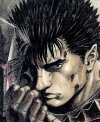[Guide]Cool neon text effects
-
Posts
-
By Poziomeczka · Posted
L2 Kings Stage 1 – The Awakening Dynasty and Moirai Level Cap: 83 Gear: Dynasty -Moirai & Weapons (Shop for Adena + Drop from mobs/instances ) Masterwork System: Available (Neolithics S required with neolithics u can do armor parts foundation aswell) Class Cloaks: Level 1 - Masterwork sets such us moirai/dynasty stats are boosted also vesper(stage 2) Olf T-Shirt: +6 (fails don’t reset) safe is +2 Dolls: Level 1 Belts: Low & Medium Enchant: Safe +3 / Max +8 / Attribution Easy in Moirai-Dynasty . Main Zones: Varka Outpost: Easy farm, Adena, EXP for new players = > 80- 100kk hour Dragon Valley: Main farm zone — , 100–120kk/hour Weapon Weakness System active (all classes can farm efficiently) Archers get vampiric auto-hits vs mobs Dragon Valley Center: Main Party Zone — boosted drops (Blessed enchants, Neolithics chance) => farm like 150-200kk per hour. Dragon Valley North: Spoil Zone (Asofe + crafting materials for MW) Primeval Isle: Safe autofarm zone (low adena for casual players) ==> 50kk per hour Forge of the Gods & Imperial Tomb: Available from Stage 1 (lower Adena reward in compare with Dragon Valley) Hellbound also avaliable from stage 1 In few words all zones opened but MAIN farm zone with boosted adena and drops is Dragon valley also has more mobs Instances: Zaken (24h Reuse) → Instead of Vespers drop Moirai , 100% chance to drop 1 of 9 dolls lvl 1, Zaken 7-Day Jewelry Raid Bosses (7 RBs): Drop Moirai Parts + Neolithic S grade instead of Vespers parts that has 7 Rb Quest give Icarus Weapons Special Feature 7rb bosses level up soul crystals aswell. Closed Areas : Monaster of SIlence, LOA, ( It wont have mobs) / Mahum Quest/Lizardmen off) Grand Epics: Unlocked on Day 4 of Stage 1 → Antharas, Valakas, Baium, AQ, etc ================================================================================= Stage 2 – Rise of Vespers Level Cap: 85 Gear: Moirai Armors (Adena GM SHOP / Craft/ Drop) Weapons: Icarus Cloaks: Level 2 Olf: +8 Dolls: Level 2 Belts: High & Top Enchant: Safe +3 / Max +8 Masterwork can be with Neolithics S84 aswell but higher so craft will be usefull aswell. 7 Raid Boss Quest Updated: Now works retail give vesper weapons 7rb Bosses Drops : Vespers Instances: Zaken : Drops to retail vespers + the dolls and the extra items that we added on stage 1 New Freya Instance: Added — drops vespers and instead of mid s84 weapons will drop vespers . Extra drops Blessed Bottle of Freya - drops 100% chance 1 of 9 dolls. Farm Areas Dragon Valley remains main farm New Zone : Lair of Antharas (mobs nerfed and added drop Noble stone so solo players can farm too) New Party Zone : LOA Circle ============================================================================ Stage 3 – The Vorpal ERA Gear: Vorpal Unclock Cloaks: Level 3 Olf: +10 (max cap) Dolls: Level 3 Enchant: Safe +3 / Max +12 Farm Zones : Dragon Valley Center Scorpions becomes a normal solo zone (no longer party zone) Drops: LOA & Knorik → Mid Weapons avaliable in drop New Party Zone Kariks Instances: Easy Freya Drops Mid Weapons Frintezza Release ================================================================================= Stage 4 – Elegia Era (Final Stage) Elegia Unlock Gear: Elegia Weapons: Elegia TOP s84 ( farmed via H-Freya/ Drops ) Cloaks: Level 5 Dolls: Level 3 (final bonuses) Enchant: Safe +6 / Max +16 Instances: Hard Freya → Drops Elegia Weapons + => The Instance will drop 2-3 parts for sure and also will be able to Join with 7 people . Party Zone will have also drop chances for elegia armor parts and weapons but small Events (Hourly): Win: 50 Event Medals + 3 GCM + morewards Lose: 25 Medals + 1 GCM + more rewards Tie: 30 Medals + 2 GCM + more rewards ================================================================================ Epic Fragments Currency Participating in Daily Bosses mass rewarding all players Participating in Instances (zaken freya frintezza etc) all players get reward ================================================================================ Adena - Main server currency (all items in gm shop require adena ) Event Medals (Festival Adena) - Event shop currency Donation coins you can buy with them dressme,cosmetics and premium account Epic Fragments you can buy with them fake epic jewels Olympiad Tokens you can buy many items from olympiad shop (Hero Coin even items that are on next stages) Olympiad Win = 1000 Tokens / Lose = 500 Tokens ================================================================================= Offline Autofarm Allows limited Offline farming requires offline autofarm ticket that you get by voting etc ================================================================================= Grand Epics have Specific Custom NPC that can spawn Epics EU/LATIN TIME ZONE ================================================================================= First Olympiad Day 19 December First Heroes 22 December ( 21 December Last day of 1st Period) After that olympiad will be weekly. ================================================================================= Item price and economy Since adena is main coin of server and NOT donation coins we will always add new items in gm shop with adena in order to burn the adena of server and not be inflation . ================================================================================= -
Hello, I'd like to change a title color for custom npc. I created custom NPC, cloned existing. I put unique id for it in npcname-e, npcgrp and database. I have "0" to serverSideName in db, so that it would use npcname-e, but instead it has "NoNameNPC"and no title color change.
-
Trusted Guy 100% , I asked him for some work and he did it right away.
-
-
Topics











Recommended Posts
Create an account or sign in to comment
You need to be a member in order to leave a comment
Create an account
Sign up for a new account in our community. It's easy!
Register a new accountSign in
Already have an account? Sign in here.
Sign In Now